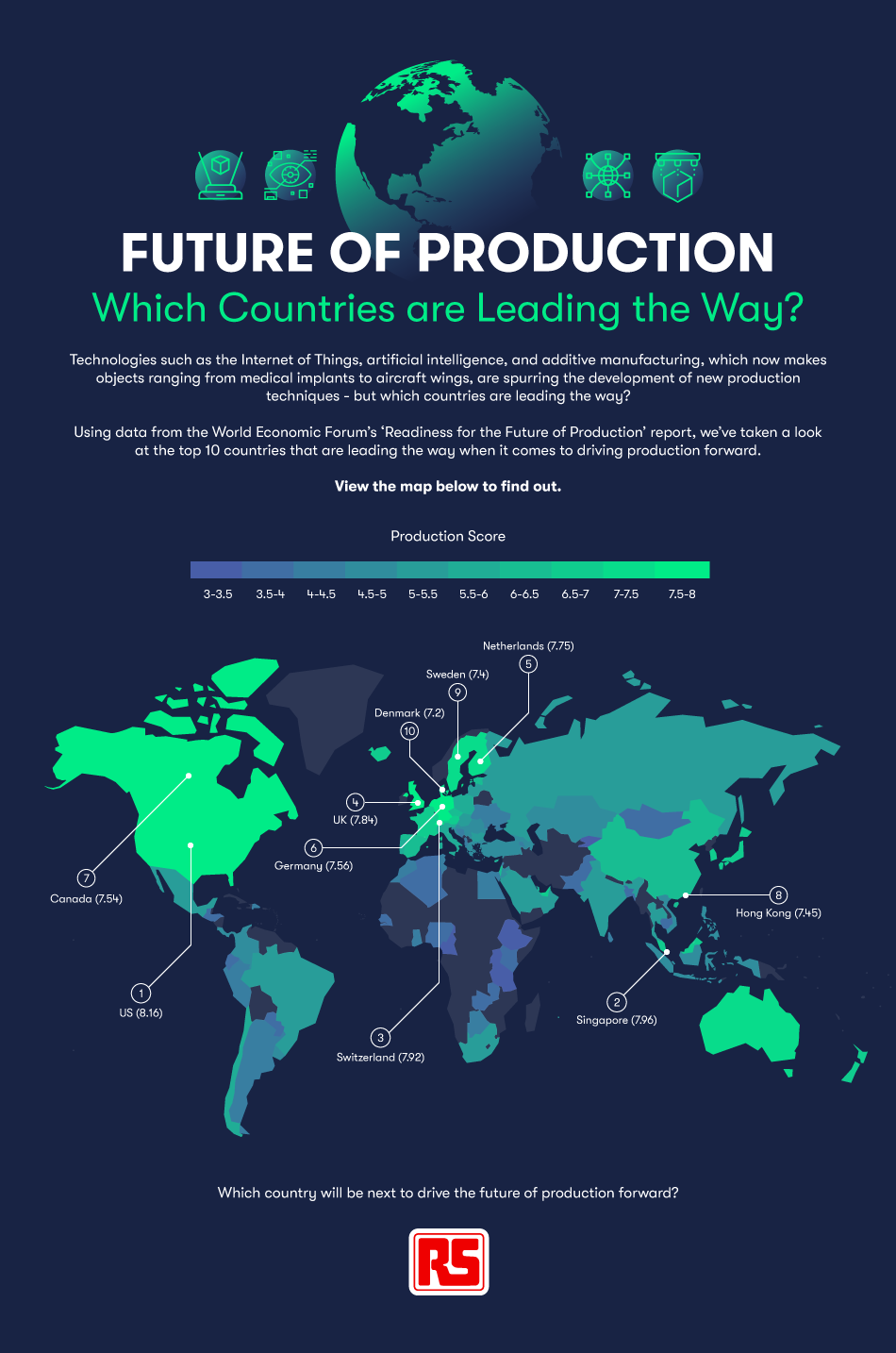|
|
It’s fair to say that the Fourth Industrial Revolution is upon us. A way of describing the blurring of boundaries between the physical, digital, and biological worlds, the Fourth Industrial Revolution is a mixture of advances in artificial intelligence (AI), robotics, the Internet of Things (IoT), 3D printing, genetic engineering, quantum computing, and other technologies. While no one can precisely predict the future, we can already see the countries adopting these emerging technologies, increasing productivity and transforming production systems. Using data from the World Economic Forum’s ‘Readiness for the Future of Production’ report, we’ve taken a look at the countries that are leading the way when it comes to driving production forward. The six main drivers are’ Technology & Innovation’, ‘Human Capital’, ‘Global Trade & Investment’, ‘Institutional Framework’, ‘Sustainable Resources’, and ‘Demand Environment’. Take a look below to see how each country compares when it comes to being ready to produce more products, technologies and goods.

The US takes the top spot, holding the top score across all drivers except ‘Sustainable Resources’ and ‘Institutional Framework’. The United States is globally renowned for its innovation and is currently at the forefront of major developments surrounding the emerging technologies of the Fourth Industrial Revolution so may come as little surprise. Singapore comes in at second place. The country’s manufacturing capabilities have evolved considerably over the past decade, which has led to scoring well across all ‘Drivers of Production’, except ‘Sustainable Resources’. Although these countries take the top spots, rapidly emerging technologies on the whole are transforming production globally. This will affect not only consumers, but businesses and countries all around the world as we embrace the changes to come. Which country will be next to drive the future of production forward?
View full data source here

The US takes the top spot, holding the top score across all drivers except ‘Sustainable Resources’ and ‘Institutional Framework’. The United States is globally renowned for its innovation and is currently at the forefront of major developments surrounding the emerging technologies of the Fourth Industrial Revolution so may come as little surprise. Singapore comes in at second place. The country’s manufacturing capabilities have evolved considerably over the past decade, which has led to scoring well across all ‘Drivers of Production’, except ‘Sustainable Resources’. Although these countries take the top spots, rapidly emerging technologies on the whole are transforming production globally. This will affect not only consumers, but businesses and countries all around the world as we embrace the changes to come. Which country will be next to drive the future of production forward?
View full data source here